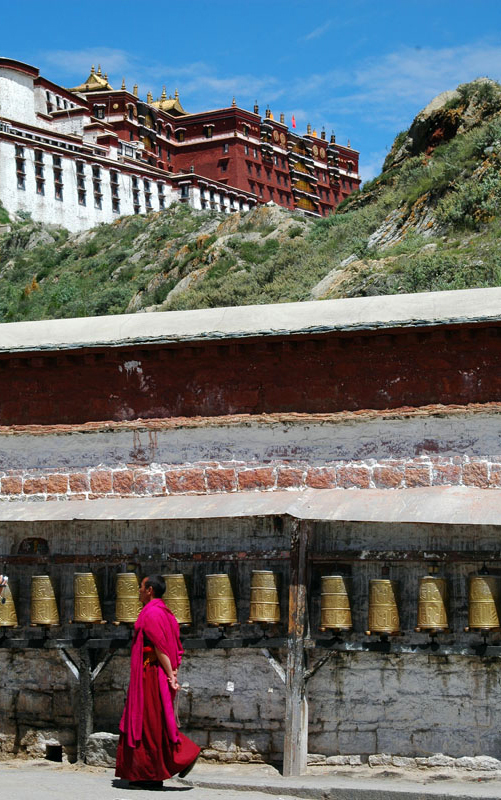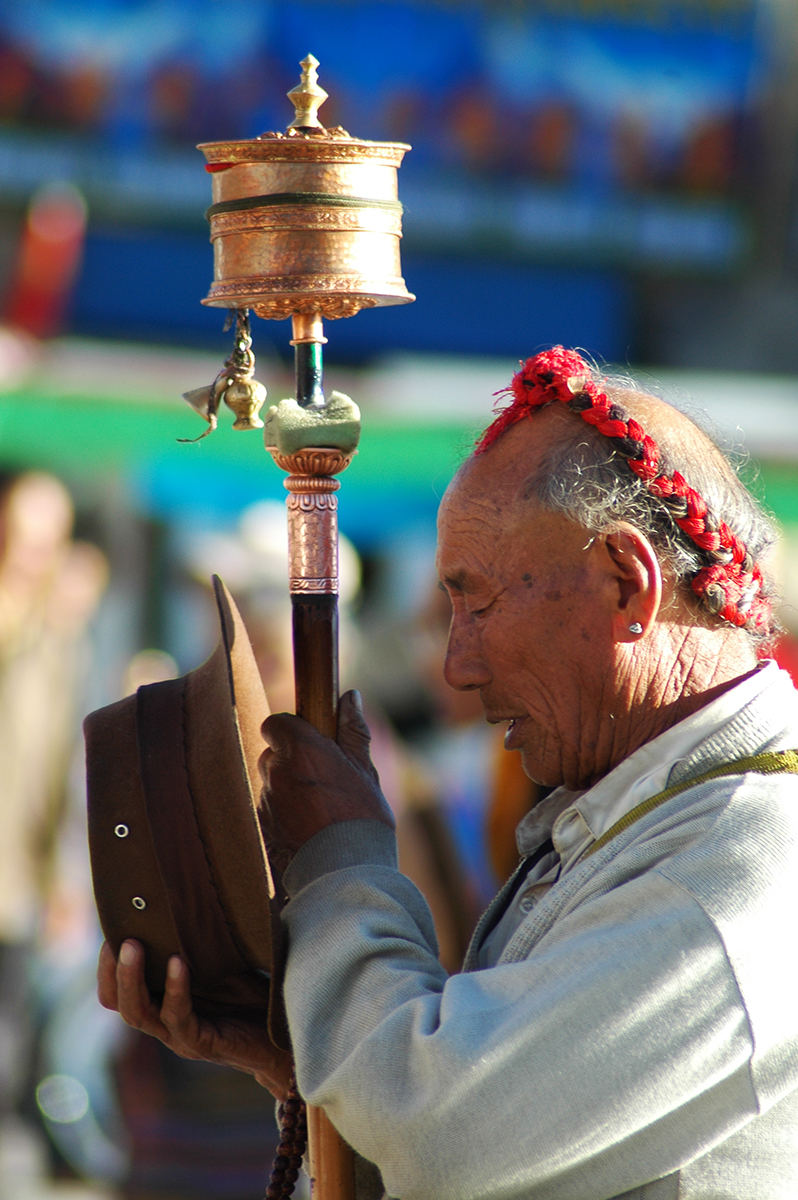
Resting atop the lofty Nyainqêntanglha Mountains at an altitude of over 3,600 metres (11,800 ft.), Lhasa represents one of the highest cities in the world. Its name literally translates to mean “Land of the Gods”, which shouldn’t come as too much of a surprise since it’s nearly touching the heavens! As the holy land of Tibetan Buddhism, this 1,300-year-old city has been a pilgrimage site for centuries and its breath-taking monasteries reflect a long religious tradition. It is home to the Potala Palace, the Jokhang Temple, and the Norbulingka, three of the finest UNESCO World Heritage Sites in western China.
The history of Lhasa is a complicated and fascinating one, as it oscillated between being a centre of political power and a spiritual place of unparalleled significance. During the 7th century, a man named Songtsän Gampo established the Tibetan Empire (618–842) and set Lhasa as his imperial capital. With a glorious kingdom at his behest, it was time to start building a palace fit for a king! In 637, he began construction of the Potala Palace, which was named after Mount Potalaka, the legendary abode of the bodhisattva[1] Avalokiteśvara according to the Buddhist faith.
Yet Songtsän Gampo wasn’t content to live in this lavish palace alone. He contracted alliance marriages with Princess Bhrikuti of the Nepalese Licchavi Kingdom (c. 400–750 AD) and Princess Wencheng of the Han Chinese Tang Dynasty (618-907) in 639 and 641 respectively. It was Princess Bhrikuti who supposedly converted him to Buddhism. After all, love is the great motivator! Each of these princesses gifted him two magnificent statues: Bhrikuti gave him a statue of Akshobhya[2] Buddha; and Wencheng brought him a breath-taking statue of Shakyamuni[3] Buddha. In order to house these wonderful gifts, he built the Jokhang Temple and the Ramoche Temple in 641. This was a golden time for Lhasa, where it thrived as a religious and political capital.
Unfortunately, all good things come to an end! During the 9th century, the city suffered extensive damage under the reign of Langdarma as the monarchy slowly began to collapse. Sacred sites were destroyed, temples were desecrated, and the empire was left fragmented. From then right up until the ascension of the 5th Dalai Lama in the 17th century, Lhasa remained a political nobody in the Tibetan region. However, as time went on, the importance of its religious sites started to be recognised.
During the 15th century, three large monasteries dedicated to the Gelugpa or Yellow Hat sect of Tibetan Buddhism were built in the city by a monk named Je Tsongkhapa and his disciples. These three monasteries, known as Ganden, Sera, and Drepung respectively, helped elevate Lhasa as the recognised centre of Tibetan Buddhism. While Lhasa was fast becoming the spiritual core of Tibet, the politics of the country were about to become intertwined with religion. After a long and harrowing era of civil wars, the 5th Dalai Lama, Ngawang Lobsang Gyatso, unified Tibet and became its independent leader.

In 1642, he moved his administration to Lhasa and the city once again found itself simultaneously the political and religious centre of the country. With the city thriving as it had done before, the Potala Palace was rebuilt and the Jokhang Temple was greatly expanded. From 1648 onwards, the Potala Palace was used by the Dalai Lama as a winter retreat, while the Norbulingka served as his summer palace. Like the divine lotus, Lhasa was enjoying a second spiritual flowering! Much of the traditional architecture you’ll find in Lhasa today was constructed during this time.
By the end of the 17th century, Lhasa had transformed into a bustling marketplace, where Mongol, Chinese, Muscovite, Armenian, Kashmiri, Nepalese, and Northern Indian traders all met to sell or exchange their valuable goods. Much of its economy depended on its historic trade routes, which represented the convergence of China, India, Nepal, and Bhutan. Nowadays this archaic pastime is largely a novelty, and the city’s economy is mainly based on tourism.
While the Potala Palace, the Jokhang Temple, and the Norbulingka are undoubtedly the city’s main draws, there are plenty of other magnificent attractions on offer in Lhasa. The eastern part of the city, known as the Barkhor, is brimming with Tibetan architecture and culture, while the western section is significantly more ethnically Han Chinese in its character. Since the eastern section contains the Jokhang Temple, it is not uncommon to still see Tibetan people immersed in a kora within the narrow streets of the Barkhor, oftentimes spinning a prayer wheel as they walk.
Notes:
[1] Bodhisattva: The term literally means “one whose goal is awakening”. It refers to a person who seeks enlightenment and is thus on the path to becoming a Buddha. It can be applied to anyone, from a newly inducted Buddhist to a veteran or “celestial” bodhisattva who has achieved supernatural powers through their training.
[2] Akshobhya: According to Buddhist scripture, Akshobhya is one of the Five Wisdom Buddhas and represents consciousness as an aspect of reality. He is the embodiment of “mirror knowledge”, which states that the mind should be like a mirror: empty yet luminous, holding all the images of space and time yet untouched by them.
[3] Shakyamuni: One of the titles of Gautama Buddha, the central figure and founder of the Buddhist faith. It is derived from the place named Sakya, which is where he was born.
Make your dream trip to Lhasa come true on our travel: Explore Untouched Wilderness on Our Full Circuit of Tibet